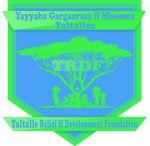The war bride whom created a shift within the White Australia Policy
Cherry Parker, initial war that is japanese to come quickly to Australia, married her spouse, AIF serviceman Digger Gordon Parker, in Japan.
Nonetheless it took four years, as well as the delivery in Japan associated with the first couple of of the eight kiddies before she ended up being finally permitted to arrive at Australia.
SBS series Australia In Colour , highlights the battle for many latin brides of Japanese war brides like Cherry to go back making use of their husbands to Australia, that was nevertheless into the hold regarding the White Australia Policy.
All around the globe, World War II lead to an unprecedented quantity of war brides.
They originated in a land hugely dissimilar to Australia. That they had to understand not merely the language however the traditions, culture and objectives. They certainly were ladies in war areas whom married soldiers that are foreign inside their nations through the war or perhaps in career when the combat stopped.
Numerous servicemen that are australian satisfy their Japanese brides in this era post-war.
Lonely ladies like Cherry Parker, definately not house, had to jump through all sorts of hoops.
Unlike the united states, where as much as 35,000 Japanese females migrated through the 1950s, there is no appropriate framework in Australia, such as the United States War Brides Act of 1945, that allowed United states servicemen whom married abroad to create their wives house.
However a grassroots campaign that is lobbying Australian servicemen, their own families as well as the community lead to an exemption when it comes to Japanese brides of Australian servicemen.
Still, these lonely women that are young not even close to house, had to leap through all sorts of hoops.
They certainly were allowed to enter Australia, initially with five-year visas, but just he could provide for his bride, that the bride supply x-rays and medical certificates and pass character and security checks, and that the marriage took place legally and according to Christian rites if they met a number of conditions: that their husband could prove. They tackled hostility, racism and distrust. In a few residential district communities within their brand new homeland, there ended up being nevertheless a stronger feeling of Japan being the enemy.
Some new arrivals were reportedly physically attacked on a Melbourne wharf by factory girls angry that Australian men had chosen foreign wives on arrival in Australia.
As a whole, about 650 Japanese ladies arrived in Australia between 1952 and 1957 as war brides, 2 decades prior to the White Australia Policy finished in 1973.
In certain residential district communities, there clearly was nevertheless a sense that is strong of being the enemy.
Half a hundred years later on, there clearly was now, finally, some recognition of those whole tales, the issues faced, and recognition among these war brides within the telling of Australia’s war history.
This past year, the marriage gown of Yoshiko Ishikawa, a new seamstress that is japanese as being a waitress whom dropped in love and hitched Australian soldier Victor Creagh in military camp in Tokyo in 1956, continued display during the nationwide Museum of Australia. To NMA curator, Laina Hall, it illustrates the wider tale of Japanese war brides, the hurdles they encountered, and exactly how their arrival engineered a little change when you look at the White Australia policy.
Enjoy Australia’s story brought vividly to life because of the new four-part show Australia in Colour premiering on SBS at 8.30pm on Wednesday March 6. Available when and anywhere on the device that is favourite after on SBS On need.
